Pakistan debates how to fill education gaps

Despite 220,000 schools nationwide, more than 20 million children are not in school, the government said in a 2016 report. Photo: Reuters
(Reuters) - Two young boys kneel over small white tables, intently studying the Koran at a madrassa in Pakistan.
The Al-Nadwa Madrassa in the hill station of Murree, 30 kilometers (19 miles) from the capital, Islamabad, is part of an established alternative system of education in the South Asian nation.
Private schools, charitable institutions and religious seminaries are stepping in to supplement government-run schools to help meet the education needs of an estimated 50 million school-age children.
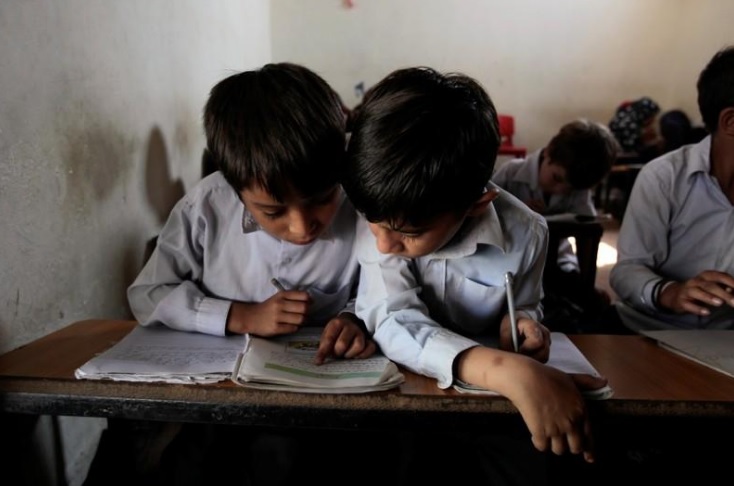
Students share a textbook during an English class at the Mashal Model school in Islamabad, Pakistan. Photo: Reuters
Despite 220,000 schools nationwide, more than 20 million children are not in school, the government said in a 2016 report.
The government has pumped money into schooling, with the education budget swelling by 15 percent every year since 2010, according to education consultancy Alif Ailaan.
The United Nations estimates Pakistan’s current education budget at 2.65 percent of GDP, roughly $8 billion, or around $150 per student.
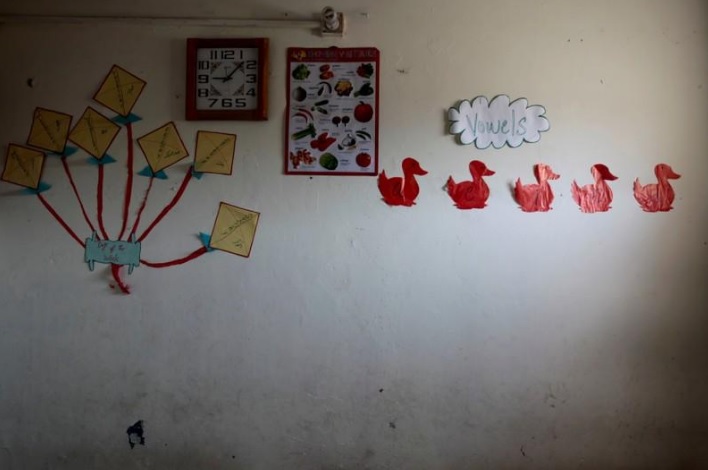
Pictures and charts are displayed on a classroom wall at the Mashal Model school in Islamabad. Photo: Reuters
Private educators say the country’s education problems are not only due to a lack of funds but also inadequate teaching.
“It’s not the number of schools, it’s the quality, the attitude,” said Zeba Hussain, founder of the Mashal Schools which teaches children displaced by war in the country’s north.
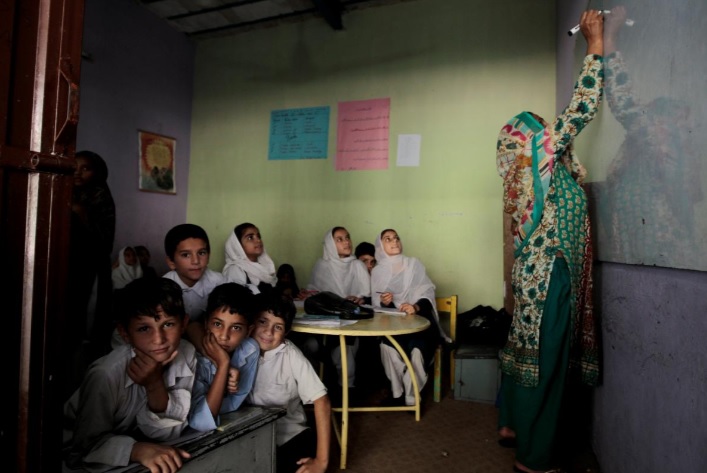
Students look out of the door as their teacher writes on the board at the Mashal Model School, in Islamabad. Photo: Reuters
Hussain started the charitable Mashal Schools after she met a group of refugee children while visiting the hill areas surrounding Islamabad.
Federal education director Tariq Masood said blaming teachers was unfair. He said population growth and funding were the biggest challenges faced by government schools.
Masood said government schools adhered to a nationwide curriculum that was being constantly reworked and improved.
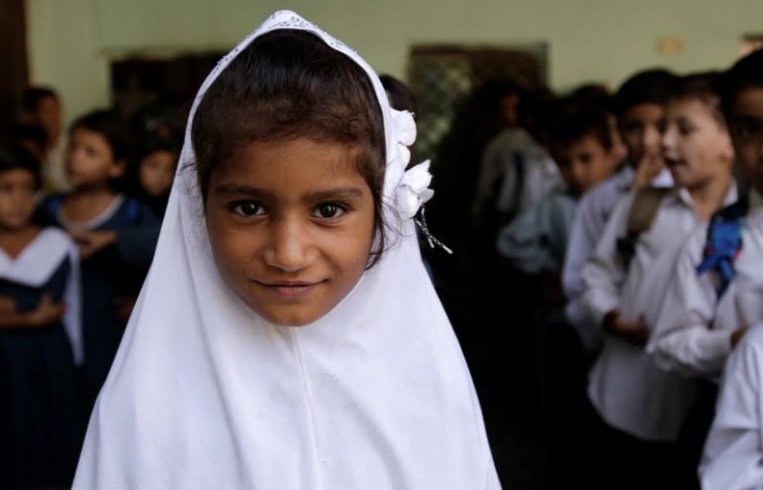
A girl attends morning assembly at the Mashal Model school in Islamabad. Photo: Reuters
“No one who is underqualified can enter the government system. There are fewer checks in the private system,” he said.
The country’s poor often send their children to one of the thousands of religious madrassas (the Arabic word for school) where students live and receive Islamic instruction.
Most operate without government oversight and some madrassas have been criticized for their hardline teachings of Islam.
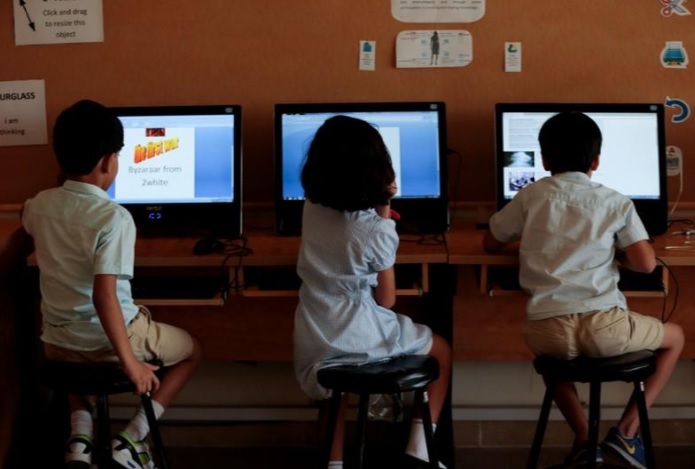
Students use computers in the technology lab at the Headstart private school in Islamabad. Photo: Reuters
The madrassas say they provide shelter, three full meals, and a good education to young people whose families are unable to make ends meet.
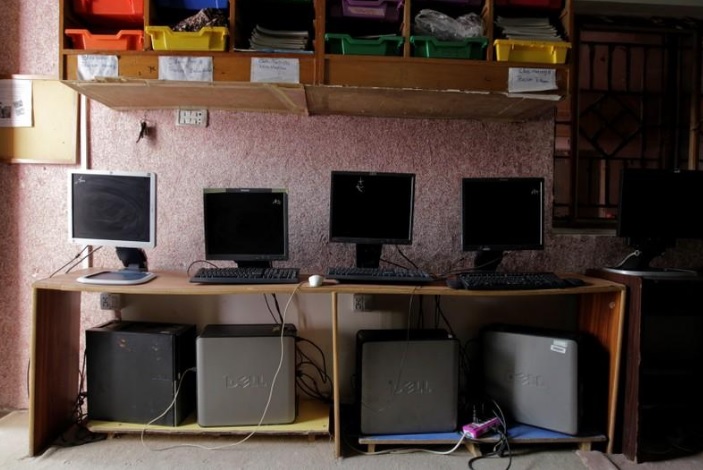
Computers are lined up in the computer lab at the Mashal Model school in Islamabad. Photo: Reuters
“In certain cases people send their kids because they can’t even afford to feed them,” said Irfan Sher from the Al-Nadwa Madrassa.
He said Pakistan’s future hinged on education for its youth.
“The overall policy should be changed...they should understand that if they want to change the country the only way is to spread quality education,” he said.


